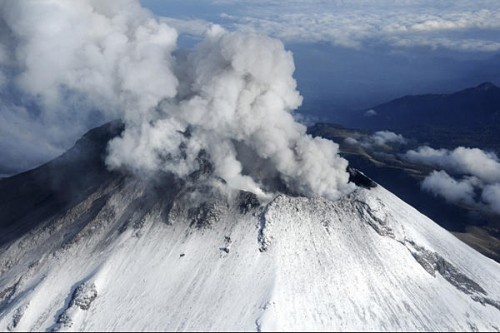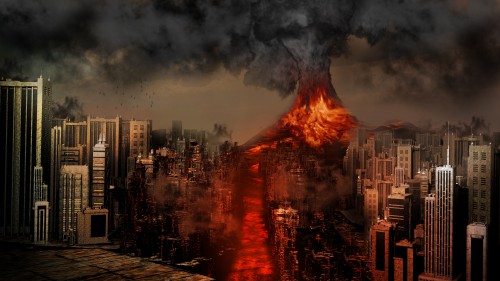When you live in Mexico, you get used to people in other countries thinking you are in a war-zone sort of apocalypse state. If it’s not narcos, it’s earthquakes, kidnappers, or chupacabras. These days, the thing for Americans to fear in Mexico is the volcano Popocatepetl, lovingly called Popo, which is chucking ash all over the place. Notice that many reports find it necessary to give Mexico City’s population alongside reports that it’s active. As if that number might drop significantly very soon.
Now, for those who live here it all seems silly. I didn’t even notice the ash – though some of these reports make you think it is piling up on the sidewalks. I have noticed the air quality is a little off for the middle of rainy season (when afternoon showers clean the skies). But all in all, the rumblings of our hulking neighbor hasn’t affected me. Far more annoying is the whole since-you-live-in-Mexico-you’ll-probably-be-dead-tomorrow attitude from friends and family.
It’s really terrible and borderline racist. But … that’s not to say I won’t use it to get a story. The last time Popo was spewing ash, I decided it was a great chance to write a story tentatively called “Popo: The Most Dangerous Volcano in North America.” The story came out of a drunken conversation with a geologist at a Dylan concert near the heart of the city. A few beers in, he gave me the impression Popo was about to level the city.

Popo as of last week
So I called up Robyn Lloyd at Scientific American and told her I had a story for her.
“Great,” she said. “I’ll take it, presuming it works out as you say it will.”
“What do you mean?” I said.
“Well, I mean, is Popocatepetl the most dangerous volcano in North America?”
“What kind of question is that?” I thought. Of course it is. It’s in Mexico and everything in Mexico is dangerous. Popo will blow and millions of people will die. Cut. Print.
Just to be sure though, I called up Randy White, a volcano expert and part of the Volcano Disaster Assistance Program, which monitors volcanoes on the continent and around the globe for USGS. White tells me that a volcano’s danger is related to a) how likely it is to explode, b) what kind of explosion it will create, and c) how many people live nearby. This can be expressed mathematically in the following equation (careful, it’s a little technical)....MORE
